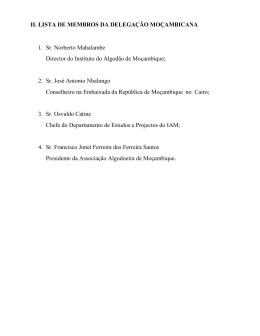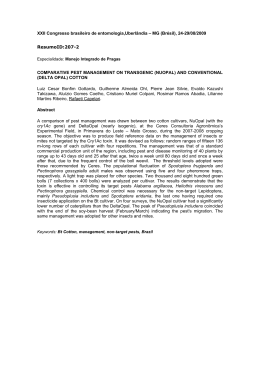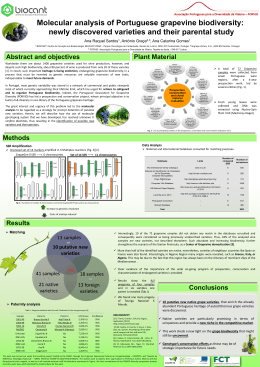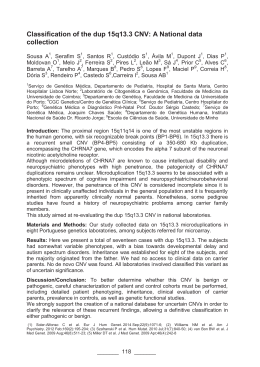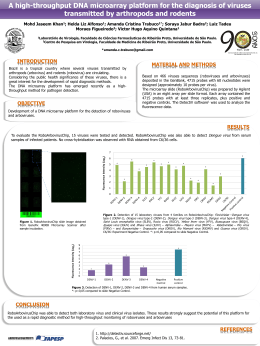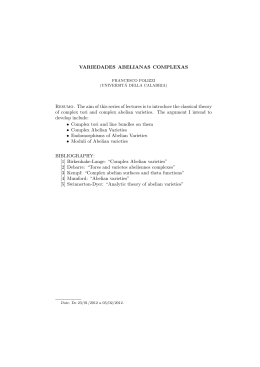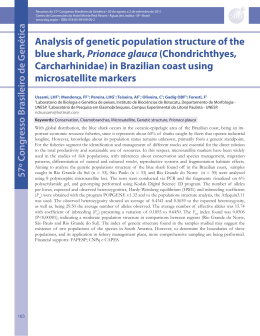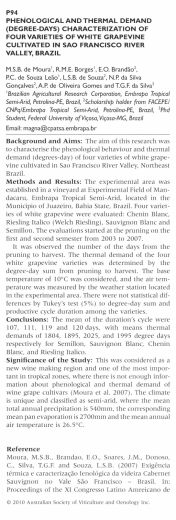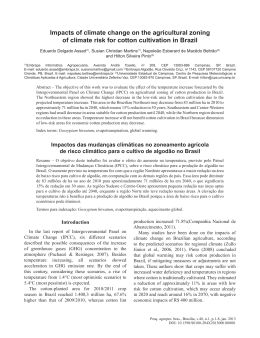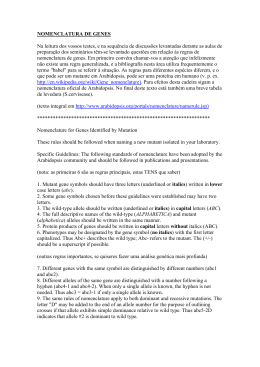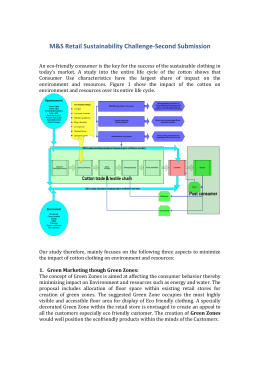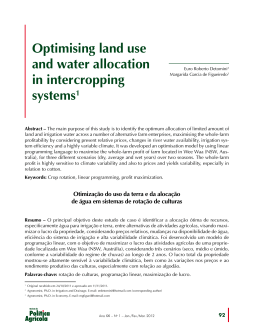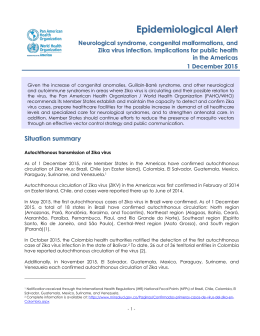III SIMPÓSIO BRASILEIRO DE GENÉTICA MOLECULAR DE PLANTAS Resumos do III Simpósio Brasileiro de Genética Molecular de Plantas 10 a 15 de abril de 2011 • Ilhéus • BA • Brasil Symptoms on cotton plants inoculated with cotton leaf roll luteovirus in the presence or absence of a SSR marker linked to the resistance gene Branquinho, AA1; Oliveira, TS2; Hoffmann, LV3; Giband, M4; Magalhães, FOC3; Barroso, PAV3 1 Universidade Federal de Goiás, Graduação, Biologia, bolsista PIBIC CNPq; 2 Unicamp, Mestrado em Genética e Biologia Molecular 3 Embrapa Algodão 4 Cirad, UMR AGAP, F-34398 Montpellier, França. *e-mail: [email protected] Key words: molecular marker, microsatellite, virus- host interaction, cotton, marker assisted selection. The Cotton Leaf Roll Dwarf Virus (CLRDV) is the causal agent of the Cotton Blue Disease, an important disease of cotton in Brazil and other countries in South America. Even though resistance to the virus is found in a number of varieties of Gossypium hirsutum, susceptible varieties are still widely grown. An SSR marker, namely marker DC20027 that is linked to the Cbd resistance gene has recently been described. Marker DC20027, which is localized on chromosome 10 at a distance of 0.75 cM of the resistance locus presents an allele of 200pb in susceptible plants and an allele of 202pb in resistant ones s. With the aim of describing how the presence of the virus and symptoms are related to the presence of the marker, plants of five varieties were inoculated with the virus. To this end, the aphid vector Aphis gossypii was fed on diseased cotton plants, and transferred to healthy plants of resistant and susceptible cotton varieties. To infer the presence or absence of the Cbd gene in the tested varieties, the SSR marker DC20027 was used. Susceptible plants of the species G. barbadense presented a novel allele of 204pb that had not previously been reported, while other susceptible accessions displayed the expected allele. Symptom intensity varied according to the variety tested, with the level of symptom being consistently the same for individual plants of the same variety. This suggests that, in addition to the Cbd gene, other factors influence the expression of disease symptoms. Furthermore, the intensity of symptoms was positively correlated to the presence of the virus coat protein. Funding was provided by: Convênio Embrapa-Monsanto Funarbe. 41
Download
